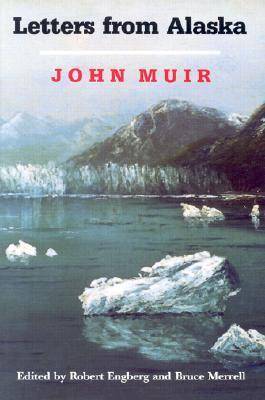North Coast Books
1 total work
During the years 1879 and 1880 John Muir traveled the waters of southeastern Alaska in a Tlingit Indian dugout canoe. Letters from Alaska follows Muir on these voyages in a series of articles he wrote for the San Francisco Daily Evening Bulletin. These "letters" are collected and republished here for the first time in more than a century, accompanied by an introduction and notes by Robert Engberg and Bruce Merrell.
Muir revised his Alaskan writings many times before they eventually appeared in his book, Travels in Alaska, published after his death in 1914. In Letters from Alaska we find the original versions of the letters, each reworked from journal accounts jotted down during his travels. They have the freshness, immediacy, and candor that mark Muir's best writing.
In these pages are rare accounts of southeastern Alaskan history. Muir records his scientific observations of glaciers and vividly describes Alaska in its early days. Through Muir's eyes we see gold miners, rogue towns, Fort Wrangel, Sitka, Taku Inlet, Endicott Arm, Glacier Bay, the infancy of the tourist industry, and the native Tlingit Indians' struggle to retain their culture in the face of Presbyterian attempts to convert them.
Muir's century-old accounts can be used as a guide for modern ship-borne tourists following the sea routes of his canoe voyages. Yet, Muir's letters are more than simple descriptions of wilderness. With every stroke of paddle and pen Muir was spreading his glacial gospel: that wilderness adventures ultimately provide for journeys of the spirit. He loved the Alaskan wilderness as a place in which it was still possible to be wild. He urged Americans to journey north. "Go," he said, "go and see. . . . "
Muir revised his Alaskan writings many times before they eventually appeared in his book, Travels in Alaska, published after his death in 1914. In Letters from Alaska we find the original versions of the letters, each reworked from journal accounts jotted down during his travels. They have the freshness, immediacy, and candor that mark Muir's best writing.
In these pages are rare accounts of southeastern Alaskan history. Muir records his scientific observations of glaciers and vividly describes Alaska in its early days. Through Muir's eyes we see gold miners, rogue towns, Fort Wrangel, Sitka, Taku Inlet, Endicott Arm, Glacier Bay, the infancy of the tourist industry, and the native Tlingit Indians' struggle to retain their culture in the face of Presbyterian attempts to convert them.
Muir's century-old accounts can be used as a guide for modern ship-borne tourists following the sea routes of his canoe voyages. Yet, Muir's letters are more than simple descriptions of wilderness. With every stroke of paddle and pen Muir was spreading his glacial gospel: that wilderness adventures ultimately provide for journeys of the spirit. He loved the Alaskan wilderness as a place in which it was still possible to be wild. He urged Americans to journey north. "Go," he said, "go and see. . . . "
